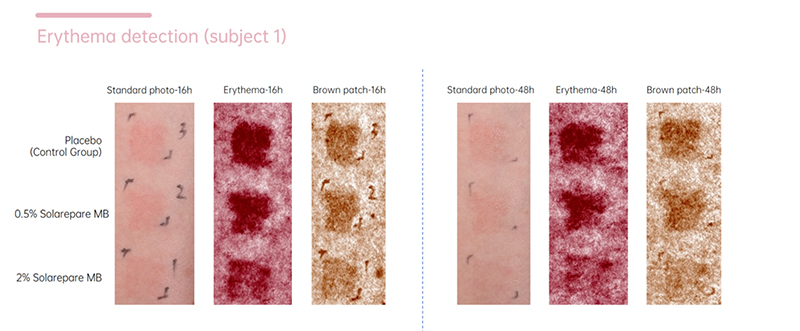Following this trend, JAKA develops a new type of active ingredient for sun care - Solarepare MB. It is mainly for UVB protection and repairing, more specifically, redness after sunburn.
The UVB exposure will cause DNA damage to the cells on the skin. The cells will secrete a group of substance called DAMPs (Damage-associated molecular patterns). And then DAMPs will cause more cell damage in the deeper layers and finally induce inflammation and redness on the skin.
Among DAMPs system, there is an important member called HMGB1. It’s also known as High-Mobility Group Box 1 protein. In normal or healthy conditions, HMGB1 is located in the nucleus, playing a positive function in DNA repairing. However, when cells are damaged, a large amount of HMGB1 is released and migrated from the nucleus which will induce inflammation. Therefore, to deal with sunburn redness and inflammation, we need to inhibit HMGB1 migration from the nucleus.
Solarepare MB is targeted at HMGB1 which is an innovative mechanism among suncare products. It shows that 0.02%-2% Solarepare MB can inhibit HMGB1 migrating from the nucleus so as to relieve the sunburn cells. At the same time, it can protect the cells from DNA damage (decrease 8-OHG and CPD, both are the DNA damage markers) and increase cell viability.
Ex-Vivo TestIn the clinical test, it shows that 0.5%-2% Solarepare MB can reduce and repair the redness on the arms after UVB exposure (Photo analyzed by VISIA).
In Vivo Test
In conclusion, Solarepare MB, which is COSMOS approved is a natural and new type of active ingredient for UVB damage repair and defence. It is extracted from Magnolia biondii flower which is rich in lignans. By targeting DAMPs, it can reduce sunburn cells, inhibit the migration of HMGB1 from the nucleus and relieve vascular activation caused by UVB. Clinically, it can protect the skin after sun exposure and alleviate skin erythema.
It can be used together with other sunscreen ingredients, providing a more environmentally friendly sunscreen effect, and in products for daily skincare to provide consumers comprehensive protection from sunlight exposure.
